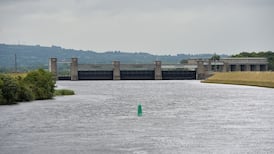The gaunt structure of Cappoquin's old grain mill, deserted and dilapidated, remains a dominant feature of the west Waterford town. It's just one of many abandoned mills dotted around Ireland, relics of a different industrial age. Some have been carefully restored and form a strong tourist attraction.
Cappoquin wants to go down that road and turn this valuable piece of its heritage into a focus for future development. The Cappoquin Community Development Association, in conjunction with Waterford County Council, which owns the mill building, is preparing an ambitious refurbishment project.
The total cost is estimated at £300,000, and a feasibility study is under way. The refurbished building would provide a multifunctional space, with child-care and creche facilities, accommodation for local scouts, a tourist office and craft shop, as well as a theatre and art gallery area.
Ideally situated on a bend of the Blackwater river, Cappoquin is a gateway to what has long been considered the finest part of the river valley region. But caught between the better-known attractions of the heritage town of Lismore, four miles west, and Mount Melleray Abbey, a few miles north, it needs to develop a strong brand image of its own.
The development company, a voluntary body, has just published a brochure to promote its name and the wide range of recreational facilities nearby.
When this is distributed to the more than one million ferry passengers carried annually by the Stena Line into Rosslare, it will at least make many aware that a small diversion from the main N25 route to the south-west can bring them into a little explored but richly endowed region.
Meanwhile, the company has initiated numerous development projects, ranging from the renovation of derelict townhouses and sites to the encouragement of more angling tourism.
It acquired premises to form an enterprise centre, and a tenant has already been found for the first of the two units there. Comprehensive plans have been prepared to develop the extensive woodland walkways, a major feature of the area.
The historic Twig Bog area near the mill and flanking the river is to be landscaped and turned into an amenity area.
But the mill restoration is the major initial target which could greatly revitalise and enhance the area. It is a huge undertaking for a small town, admits Orla Hayes, project development officer, employed by FAS.
But fund-raising is already under way through a weekly local lotto, and the self-help approach adopted by this rural community has the enthusiastic backing of the Waterford Development Partnership, Forbairt, and other agencies.








